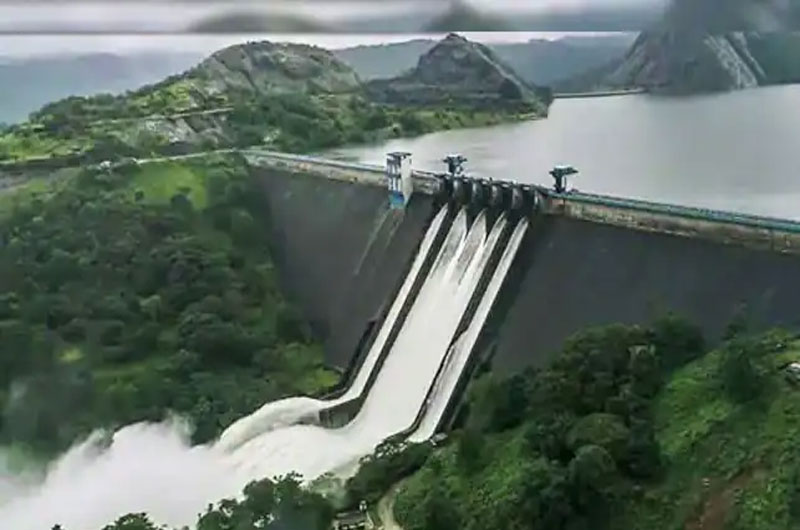
The Majestic Periyar River: Kerala’s Lifeline of Nature and Culture
The Periyar River, often referred to as the lifeline of Kerala, is a significant river in the Indian state of Kerala. Flowing through the picturesque landscapes of the Western Ghats, the Periyar River is not only a vital water source but also a key contributor to Kerala’s cultural and natural heritage. This detailed guide explores the Periyar River’s tourism specialties, locality, nearby tourist spots, historical significance, the best times to visit, and practical travel information, offering an enriching experience for travelers.
1. Overview of the Periyar River
1.1 Geographic Location and Course
- Origin: The Periyar River originates in the Sivagiri hills of the Western Ghats in Tamil Nadu.
- Course: It flows westward through the Indian states of Tamil Nadu and Kerala, traversing through the Periyar National Park before emptying into the Arabian Sea.
- Length: The Periyar River stretches approximately 244 kilometers, making it the longest river in Kerala.
1.2 Importance and Significance
- Economic Impact: The Periyar River is crucial for irrigation, supporting agriculture in the region. It also provides water for industrial use and domestic consumption.
- Cultural Impact: The river holds significant cultural and spiritual importance, with many temples and religious sites located along its banks.
2. Tourism Specialty
2.1 Scenic Beauty
- Periyar National Park: The river flows through this renowned wildlife sanctuary, offering stunning views of lush greenery and diverse wildlife.
- Backwaters: The Periyar River contributes to Kerala’s famous backwaters, creating a serene and picturesque landscape ideal for boating and houseboat cruises.
2.2 Historical and Cultural Significance
- Temples and Shrines: The riverbanks are dotted with ancient temples, including the famous Sree Poornathrayesa Temple and the Aluva Siva Temple, reflecting the region’s rich spiritual heritage.
- Festivals: Numerous local festivals and rituals are centered around the Periyar River, showcasing Kerala’s vibrant culture and traditions.
2.3 Adventure and Activities
- Boating and River Cruises: Visitors can enjoy boating and houseboat cruises on the Periyar River, offering a tranquil way to explore the natural beauty of the region.
- Wildlife Safaris: The Periyar National Park offers guided safaris, providing opportunities to spot elephants, tigers, and various bird species.
3. Locality and Major Cities
3.1 Key Cities Along the Periyar
- Kochi: A major port city and commercial hub, Kochi is located near the mouth of the Periyar River and is known for its historical landmarks and vibrant culture.
- Aluva: Situated on the banks of the Periyar, Aluva is known for its scenic beauty and religious significance, particularly the annual Shivarathri festival held on the riverbanks.
3.2 Nearby Tourist Spots
- Periyar National Park: A biodiversity hotspot offering wildlife safaris, trekking, and bamboo rafting.
- Thattekad Bird Sanctuary: A haven for bird watchers, this sanctuary is home to a variety of endemic and migratory bird species.
- Alleppey: Famous for its backwaters and houseboat cruises, Alleppey is a short drive from the Periyar River.
4. History of the Periyar River
4.1 Ancient Significance
- Historical References: The Periyar River has been mentioned in various ancient texts, highlighting its importance in regional trade, agriculture, and settlements.
- Mythological Connections: The river is associated with various local legends and myths, reflecting its cultural significance in ancient Indian traditions.
4.2 Medieval and Modern History
- Medieval Period: During the medieval period, the Periyar River was crucial for the local kingdoms’ irrigation and agricultural activities. The construction of temples and shrines along its banks during this time indicates its spiritual significance.
- Colonial Era and Post-Independence: In the colonial era, the river was significant for trade and transportation. Post-independence, it has continued to support agriculture, industry, and domestic needs, while also becoming a focus for conservation and tourism.
5. Best Time to Visit
5.1 Ideal Seasons
- Winter (October to February): The weather is pleasant, making it the ideal time for exploring the river and its surroundings. This season is perfect for outdoor activities, sightseeing, and enjoying river-based activities like boating.
- Summer (March to May): The weather can be quite hot, but early mornings and late evenings can still be enjoyable.
- Monsoon (June to September): The river experiences increased flow and can be prone to flooding during the monsoon season. While the lush greenery and dynamic river are attractive, travel might be challenging due to heavy rains.
5.2 Special Events
- Aluva Shivarathri Festival: Celebrated in February/March, this festival attracts thousands of devotees to the banks of the Periyar River for rituals and celebrations.
- Onam Festival: Kerala’s major festival, celebrated in August/September, sees vibrant cultural events and festivities along the riverbanks.
6. Nearby Restaurants and Hotels
6.1 Restaurants
- Dal Roti: Known for its North Indian cuisine, this restaurant in Fort Kochi offers a variety of delicious dishes.
- Ginger House Restaurant: Located in Mattancherry, Kochi, this restaurant offers a unique dining experience with a view of the backwaters.
- Brindhavan Vegetarian Restaurant: Situated in Aluva, this restaurant offers traditional South Indian vegetarian cuisine.
6.2 Hotels
- Taj Malabar Resort & Spa, Cochin: Offering luxurious accommodations with stunning views of the backwaters and the Arabian Sea.
- Grand Hyatt Kochi Bolgatty: A luxury waterfront hotel providing modern amenities and excellent service.
- Flora Airport Hotel: Conveniently located near the Cochin International Airport, offering comfortable accommodations with modern facilities.
- Periyar House: A forest lodge located within the Periyar National Park, providing a unique experience close to nature.
Conclusion
The Periyar River, with its historical, cultural, and natural significance, provides a unique destination for travelers exploring Kerala. From its picturesque landscapes and serene waterways to its rich history and cultural heritage, the Periyar River offers diverse experiences for visitors. Whether you are interested in nature, history, or local traditions, the Periyar River promises a memorable and enriching journey through one of India’s most vital waterways.
